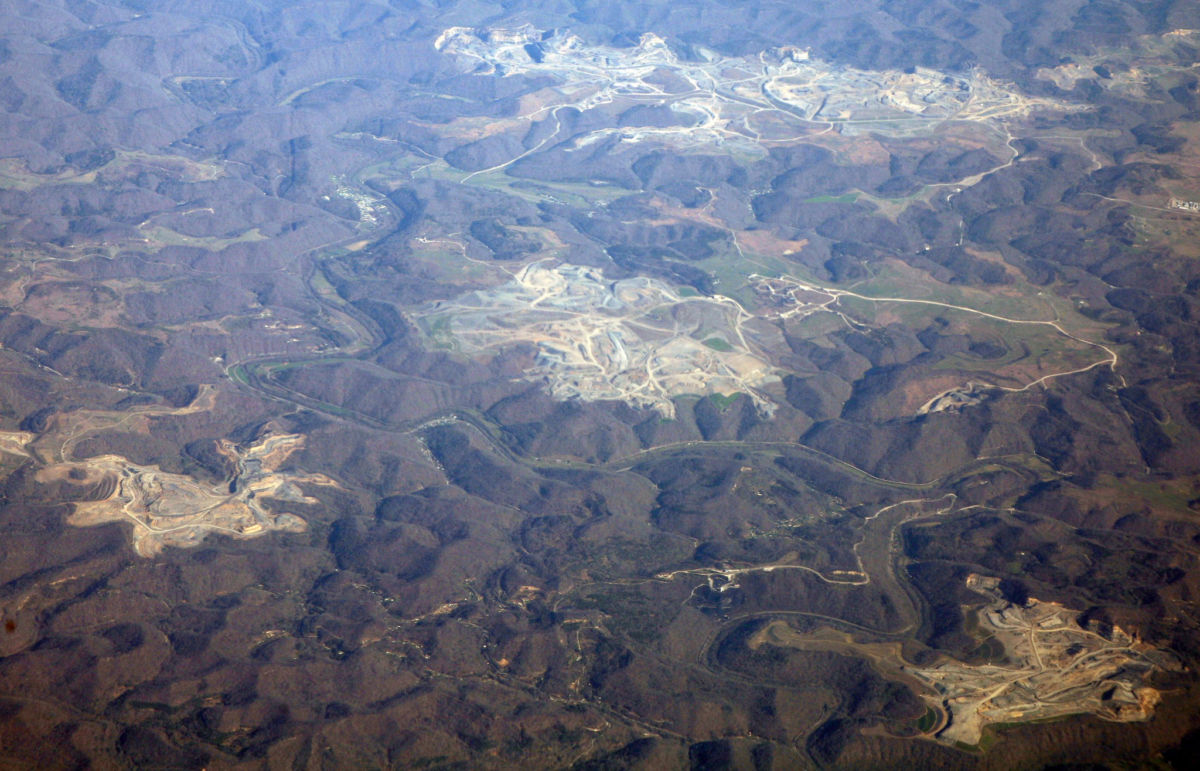Part of the Series
America's Toxic Prisons
The Federal government’s plan to build a maximum-security prison on a former mountaintop-removal coal-mining site in eastern Kentucky has been one of those zombie-like bad ideas that simply refuses to die. But after years of fierce opposition by environmental, prisoner rights, and local citizen rights groups, it appears that the controversial project might finally be buried forever.
Last month, the Bureau of Prisons (BOP) formally withdrew its plan for the $510 million project in Kentucky’s Letcher County based on what it claimed was “new information” pertaining to the “environmental analysis” for the project.
Opponents of the project say the decision, though not entirely expected, is clearly a result of their sustained campaign against the prison.
“We were surprised that they actually withdrew it. We thought we were going to have to litigate this all the way through,” says Dustin McDaniel, director of the Abolitionist Law Center, one of the groups that sued the Bureau of Prisons last year over the project along with 21 federal prisoners from around the country who say they were not properly informed about possible environmental and health impact of a prison that could house them in the near future. (The initial lawsuit was filed in November 2018. Friends of Lilley Cornett Woods and North Fork River Watershed, a local group that has long opposed the prison due to its likely impacts on surrounding natural areas and threatened and endangered species, joined the suit this past April.)
“This outcome couldn’t have happened without the courage of local residents in Letcher County and federal prisoners, all who risked significant blow back for standing up to oppose this prison,” says Panagioti Tsolkas, co-founder of the Campaign to Fight Toxic Prisons.
Plans for the prison first surfaced back in 2005. In 2015, the federal government set aside $444 million for the project, making it the most expensive proposed federal prison in U.S. history. That sum has since ballooned to $510 million. If built as planned, the 800-acre, maximum security prison would be the fourth new federal prison in eastern Kentucky, and the sixth federal prison built in Central Appalachia, since 1992, making the region one of the most concentrated areas of prison growth in the country.
Touted by its supporters — including Kentucky Representative Hal Rogers and Senate Majority Leader Mitch McConnell — as a job creator in an economically depressed region, the project has been stalled due to multiple challenges from local land owners, environmental groups, and prisoner rights organizations.
Activists have long pointed out that the facility, which was to be sited near an active mine and coal sludge pond, would impact nearby wildlife habitats, including a 250-acre old growth forest within Lilly Cornett Woods. Building it would require clearcutting over 120 acres of forest habitat for two federally endangered bat species — the Indiana bat and the gray bat — as well as excavating and grading an additional 59 acres, and the destruction of three acres of wetlands.
Yet, despite years of opposition to the project from many quarters, including from within the federal government itself, it simply refused to die. Not even after the U.S. Department of Justice withdrew its request for funding the project in June 2017, citing a declining prison populations and noting that the Bureau of Prisons (which is a subdivision of the justice department) could expand capacity at existing facilities and through private prisons if necessary. Instead, less than a year later, in March 2018, the Bureau of Prisons went ahead and issued a Record of Decision, indicating its “intent to move forward with construction” of the facility.
Which is why the bureau’s announcement last month that it was abandoning the project came as a bit of a surprise. McDaniel believes it could be partly due to an amendment to the lawsuit that had been filed recently. The amendment included information from the new federal budget that specifically mentioned that the budget didn’t support the construction of the prison.
In a section proposing the that project be cancelled, the budget states:
“Given the declining prison population has reduced capacity demands, new construction is more costly than purchasing existing unused facilities, prison construction has not been shown to spur local economic growth, and complications associated with the Letcher County site have contributed to increased costs and significant delays.”
“I think because of that information [the bureau’s] attorneys probably told them that this project was going to be hard to defend,” McDaniel says. “We hope the BOP’s action ends this prison project permanently, and that it also signifies a turning point nationally, away from investing money in prison construction, and toward increased investment in communities devastated by mass incarceration.”
But as with zombies, one can’t be totally sure this project won’t revive again. Hal Rogers and Mitch McConnell are already claiming that they are going to work together to ensure that the project “moves forward.”
“What you have here is a pork barrel project. It is politicians who have been behind this saying they are not giving up, but there really is no basis to proceed,” McDaniel says. “If they do decide to proceed, then they will need another two years to complete a new environmental impact statement, and, of course, we will sue again.”
Join us in defending the truth before it’s too late
The future of independent journalism is uncertain, and the consequences of losing it are too grave to ignore. To ensure Truthout remains safe, strong, and free, we need to raise $43,000 in the next 6 days. Every dollar raised goes directly toward the costs of producing news you can trust.
Please give what you can — because by supporting us with a tax-deductible donation, you’re not just preserving a source of news, you’re helping to safeguard what’s left of our democracy.
